Lady Elliot Island: A paradise island where you make a pledge
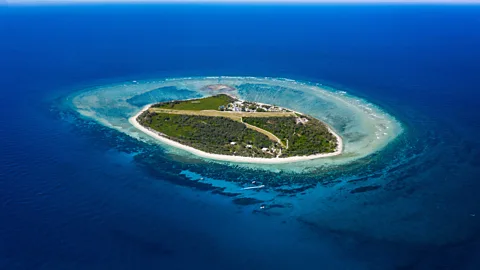 Lady Elliot Island
Lady Elliot IslandOn Australia's Great Barrier Reef, tourists can play a role in an island's epic regeneration story.
"Mantas!"
Master Reef Guide Kirsty Whitman didn't need to tell me twice. Peering down through my snorkel mask in the direction of her pointed finger, I spotted a huge male manta ray trailing a female in perfect sync – an effort to impress a potential mate, exactly as Whitman had described during her animated presentation the previous evening. Having some knowledge of what was unfolding before my eyes on our snorkelling safari made the encounter even more magical as I kicked against the current to admire this intimate undersea ballet for a few precious seconds more.
It's a moment I could have been lucky enough to experience just about anywhere on the Great Barrier Reef. But manta sightings are exceptionally common in the aquamarine waters lapping Lady Elliot Island at the remote southern tip of the World Heritage-listed reef, some 85km north-east of the mainland city of Bundaberg. Its proximity to the continental shelf helps, but studies have indicated that the island's regeneration likely also plays a role in the phenomenon.
"I love being told that something can't be done," said Peter Gash with twinkling eyes, as the managing director of Lady Elliot Island Eco Resort led me into a structure resembling a giant chicken coop, its open-air design allowing the sea breeze to naturally cool the 248 batteries inside. Storing the energy captured by more than 906 solar panels, this humble solar power station generates enough renewable energy to run the entire resort. And that's including custom-built desalination and wastewater treatment plants, as well as the staff quarters.
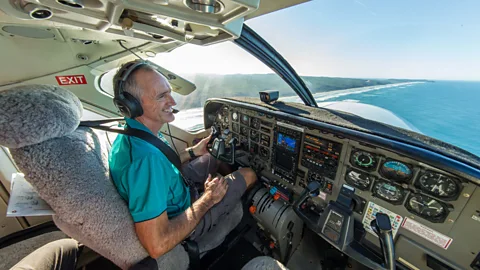 Lady Elliot Island
Lady Elliot IslandWhen the Gash family secured the lease to the 45-hectare island in 2005, switching to solar was a priority – not just for the environment, but also the bottom line. "We had three generators using 550 to 600 litres of diesel a day, and they were so noisy," said Gash. "I'd be out snorkelling and I could still hear them."
With no how-to guide, Gash took himself off on a trip around Australia to research solar power stations. "People said I was mad to attempt something like this out here, but I knew we'd find a way," he grinned.
The father of two finally achieved his goal in 2020. But the island's renewable energy journey is just one chapter of an incredible regenerative tourism story with lessons for the world.
Stripped almost bare by guano miners in the late 1800s, with the establishment of new growth prevented by goats placed on the island by the Queensland Government to ensure food for shipwrecked sailors, Lady Elliot had been reduced to little more than a field of compacted coral by the mid-20th Century. Yet, keen aviator Don Adams saw a business opportunity when he landed on the degraded Commonwealth island in 1969, opening a small resort and commencing a DIY revegetation programme.
A decade later, a young Peter Gash became similarly smitten with the island – or more accurately, its potential – during a sailing trip accompanied by the woman who would become his wife, Julie. Gaining his pilot's licence, Gash began flying tourists from Brisbane and the Gold Coast to Lady Elliot and Lady Musgrave, 40km north-west, for a taste of the Great Barrier Reef without the need to travel up to the main reef tourism hub of Cairns. Struck by the contrast between stark Lady Elliot and its densely vegetated neighbour, where colonial-era mining was less extensive, a seed was planted.
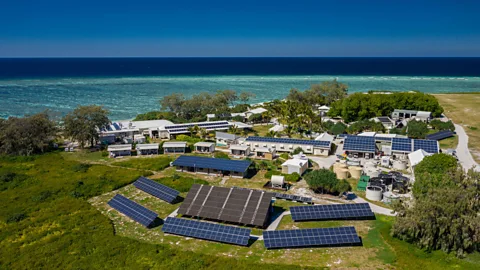 Lady Elliot Island
Lady Elliot IslandBuilding on Adams' legacy, Gash estimates more than 10,000 native seedlings have since been planted across the island. Combined with an invasive plant eradication programme, Lady Elliot is an isle transformed, with guest cabins now protected from north-easterly winds by a neon-green wall of octopus bushes, and a forest of pisonia trees rising up from the western side of the island providing a home for nesting seabirds. Pandanus trees anchor dunes frequented by nesting green and loggerhead turtles, and Gash's team is currently exploring ways to replant the island's airstrip with native grasses.
The revegetation of the island, now home to the second-highest diversity of bird species on the Great Barrier Reef, is also having a ripple effect on the surrounding reef, with seabird nutrients naturally filtered by the shingle coral cay recently found to have a fertiliser-like effect on coral.
"In high concentrations, the phosphate and nitrogen in bird poop could kill the reef, but it's a bit like chocolate – if you have a little bit, it's OK," Gash explained.
Plunging in for a scuba dive, I was spellbound by the vitality of Lady Elliot's fringing reef. Circling the base of a coral reef outcrop, I spied a green turtle the size of a dining room table dozing beneath an overhang. There was a flash of colour as a pair of parrotfish – a key indicator of a healthy reef – darted past, and every anemone seemed to be filled with robust family of clownfish.
But as I'd seen earlier, these sparkling blue waters, protected as a marine national park "green (no-take) zone", are best known for their majestic manta rays. Showcased in David Attenborough's three-part Great Barrier Reef documentary, a semi-resident manta population swells to some 700 individuals during the winter months, making the island one of the best places in the world to swim with these kites of the sea.
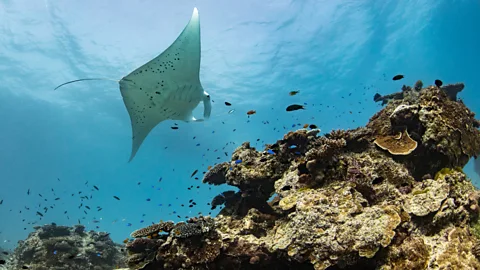 Colin Baker
Colin BakerHere guests don't just admire mantas, but also help protect them by participating in Project Manta. Hosted in collaboration with the University of Queensland, the initiative allows tourists to photograph and upload images of the mantas they see, with data collected directly impacting science on the reef.
It's one of a handful of citizen science projects guests can get involved with during their stay on the laid-back island, where visitors are also encouraged to join staff in making a pledge to protect the ecosystem via actions including minimising the use of electricity and water, leaving birds and marine life undisturbed, and even going easy at the dining room buffet to limit food waste. While many other Great Barrier Reef Island resorts have since stepped up their sustainability initiatives, there is still nowhere else quite like this family-friendly outpost on the Great Barrier Reef.
With no phones, TVs or wi-fi in the simple but comfortable guest cabins (refurbished between 2021-23), visitors are invited to engage instead with the island, with a packed daily schedule of included presentations and experiences to mix and match. I was intrigued by the Climate Change Trail, and the irony wasn't lost on me when I discovered that the self-guided walk – installed years before the climate crisis became a global flashpoint – had been almost entirely consumed by regenerated vegetation. One still-accessible signboard highlighting the impacts of rising global temperatures on the sex of sea turtle hatchlings stands testament to the global importance of the dedication of Gash and his team to minimise the carbon footprint of the island, which was also the first on the Great Barrier Reef to ban single-use plastic bottles, in 2012.
"The more we give back to the island, the more it gives back to us," says Gash. "It teaches a story of hope, showing people that if we can fix this little place, we can fix our big place, too."
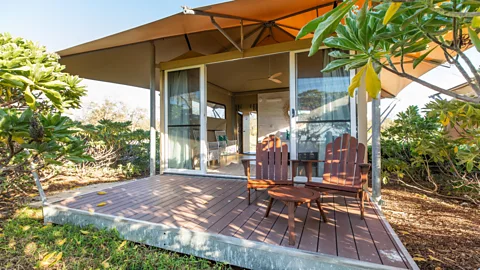 Lady Elliot Island
Lady Elliot IslandHis efforts haven't gone unnoticed, with Gash awarded an Order of Australia Medal in 2020 for his services to ecotourism and aviation. Lady Elliot has also drawn some the world's biggest names in conservation over the years, including King (then-Prince) Charles, who visited in 2018 as part of a roundtable discussion with business leaders on the role they could play in protecting the reef. The same year, Lady Elliot was selected as the first "climate change ark" to be established through the Great Barrier Reef Foundation's Reef Islands Initiative, a 10-year project to establish a network of climate change refuges to protect critical habitats on key reef islands.
With a barge arriving just three times a year to transport just 15 bins of garbage to the mainland and top up supplies, nothing is wasted on Lady Elliot. Rubbish is diligently separated, food scraps are churned into compost by a machine affectionally known as Oscar, and treated wastewater is used for irrigation. Yet guests don't go without, with sundowners served out of the back of an electric buggy on Lighthouse Beach every evening at sunset adding a touch of luxury.
With the fleet of small, fuel-efficient planes used to transport guests to the island accounting for most of the resort's emissions (guests can opt to pledge $2 to support its carbon-offsetting programe in partnership with Greenfleet), Gash now has his sights set on transitioning to electric aviation.
"I had hoped to be flying an electric aircraft to Lady Elliot by my 65th birthday, but with only a year to go now, it might have to be by my 70th," he grinned, with that twinkle in his eyes again.
Thoughtful Travel is a BBC Travel series that helps people explore places responsibly and sustainably, all while making them better through regenerative and responsible travel.
---
Join more than three million BBC Travel fans by liking us on Facebook, or follow us on Twitter and Instagram.
If you liked this story, sign up for the weekly bbc.com features newsletter called "The Essential List". A handpicked selection of stories from BBC Future, Culture, Worklife and Travel, delivered to your inbox every Friday.
